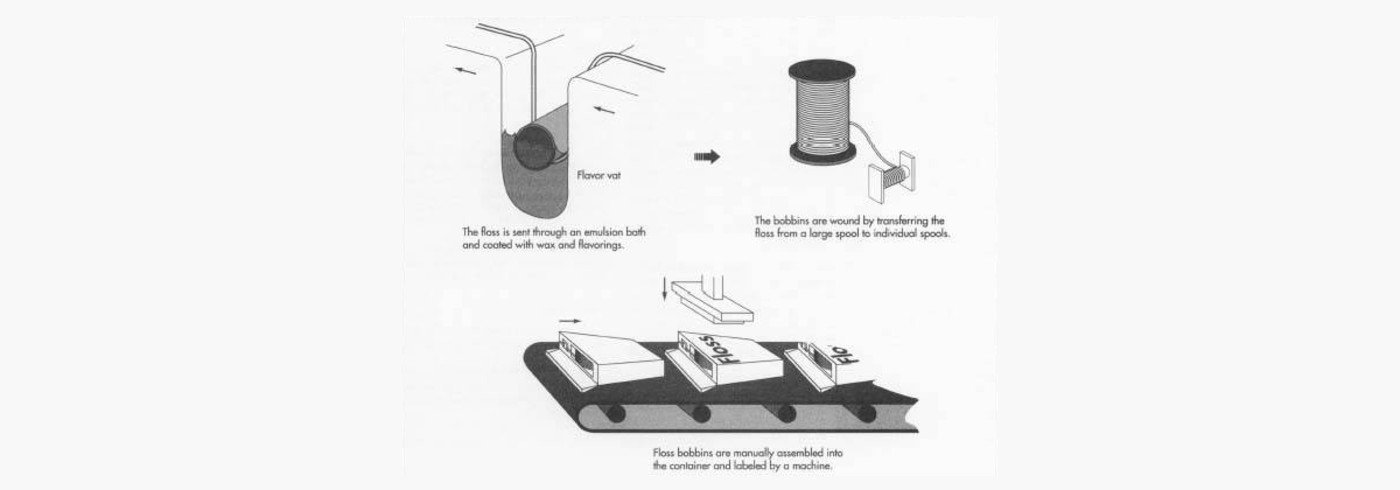The use of dental floss helps to remove plaque, a sticky, gel-like substance made of bacteria that forms on teeth and between teeth, as well as on the tooth surface below the gum line. If the plaque is not removed, it hardens and is then called tartar. If tartar is allowed to accumulate, gingivitis, or an inflammation of the gums, usually accompanied by redness, swelling, and bleeding, can result. Eventually, gums begin to separate from the teeth, forming "pockets" that frequently become infected. If this goes unchecked, the bone that supports the teeth is destroyed, resulting in tooth loss. To avoid this, adults and children over age 10 are advised to floss at least once a day. Flossing disturbs bacteria, stopping it before it can create plaque and ultimately cause gum and bone disease.
Floss is available in string or ribbon form, and can be lightly waxed, waxed, or un-waxed. It is also available in several flavors such as cinnamon, mint, bubble-gum, and plain. Ribbon floss is the most effective choice when there are ample spaces between the teeth; since baby and children's teeth are widely-spaced, ribbon floss is the most common selection for children. On the other hand, when teeth have contact points, that is, when they come in contact with one another, the preferred choice is the narrower or string floss. Waxed or lightly waxed is recommended for use between crowded or crooked teeth.


